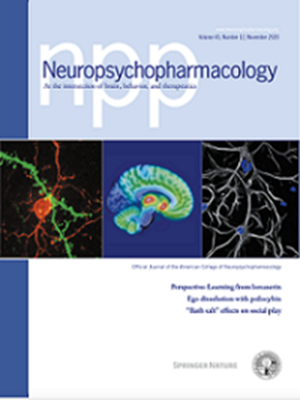Multi-ancestry genome-wide association meta-analysis of buprenorphine treatment response
IF 6.6
1区 医学
Q1 NEUROSCIENCES
引用次数: 0
Abstract
Although the mu-opioid partial agonist buprenorphine is increasingly being prescribed to treat opioid use disorder, patients’ responses to the drug vary and few clinical and no genetic predictors of treatment response have been identified. We conducted a genome-wide association study (GWAS) meta-analysis of buprenorphine treatment response (defined using urine drug screen results) in 4394 Veterans with opioid use disorder from the VA Million Veteran Program (751 of African-like ancestry [AFR] and 3643 of European-like ancestry [EUR]) and 296 participants from a clinical trial of extended-release buprenorphine (nAFR = 104, nEUR = 192). We conducted within-ancestry GWAS in both cohorts, followed by cross-ancestry, fixed-effects GWAS meta-analyses within and across cohorts. We also examined associations between demographic and clinical characteristics and buprenorphine treatment response. The cross-ancestry meta-analysis of both cohorts identified one genome-wide significant locus (rs149319538) that maps to SLC39A10, a gene that encodes a zinc transporter. Phenome-wide association analyses of the lead variant implicated connectivity of the uncinate fasciculus, a limbic white matter fiber tract. Of the clinical characteristics, only the presence of chronic pain and a lower maximum buprenorphine dosage were related to higher odds of treatment response in adjusted models. We report here the first genome-wide significant variant associated with buprenorphine treatment response. Larger samples are needed to replicate these findings and identify additional clinical and genetic factors that predict buprenorphine treatment efficacy to enable the use of a precision approach to OUD treatment.

丁丙诺啡治疗反应的多祖先全基因组关联meta分析。
尽管多阿片类药物部分激动剂丁丙诺啡越来越多地被用于治疗阿片类药物使用障碍,但患者对药物的反应各不相同,很少有临床和遗传预测治疗反应的因素被确定。我们对4394名来自VA百万退伍军人计划的阿片类药物使用障碍退伍军人(751名非洲裔[AFR]和3643名欧洲裔[EUR])和296名来自延期释放丁丙诺啡临床试验的参与者(nAFR = 104, nEUR = 192)进行了一项全基因组关联研究(GWAS)荟萃分析,以确定丁丙诺啡治疗反应(通过尿液药物筛查结果定义)。我们在两个队列中进行了祖先内的GWAS,随后进行了跨祖先、固定效应的GWAS荟萃分析。我们还研究了人口统计学和临床特征与丁丙诺啡治疗反应之间的关系。对两个队列的跨祖先荟萃分析确定了一个全基因组重要位点(rs149319538),该位点映射到SLC39A10,一个编码锌转运蛋白的基因。对先导变异的全现象关联分析暗示了钩状束的连通性,这是一个边缘白质纤维束。在临床特征中,在调整后的模型中,只有慢性疼痛和较低的丁丙诺啡最大剂量与较高的治疗反应几率相关。我们在此报告了第一个与丁丙诺啡治疗反应相关的全基因组显著变异。需要更大的样本来重复这些发现,并确定预测丁丙诺啡治疗效果的其他临床和遗传因素,以便使用精确的方法来治疗OUD。
本文章由计算机程序翻译,如有差异,请以英文原文为准。
求助全文
约1分钟内获得全文
求助全文
来源期刊

Neuropsychopharmacology
医学-精神病学
CiteScore
15.00
自引率
2.60%
发文量
240
审稿时长
2 months
期刊介绍:
Neuropsychopharmacology is a reputable international scientific journal that serves as the official publication of the American College of Neuropsychopharmacology (ACNP). The journal's primary focus is on research that enhances our knowledge of the brain and behavior, with a particular emphasis on the molecular, cellular, physiological, and psychological aspects of substances that affect the central nervous system (CNS). It also aims to identify new molecular targets for the development of future drugs.
The journal prioritizes original research reports, but it also welcomes mini-reviews and perspectives, which are often solicited by the editorial office. These types of articles provide valuable insights and syntheses of current research trends and future directions in the field of neuroscience and pharmacology.
 求助内容:
求助内容: 应助结果提醒方式:
应助结果提醒方式:


